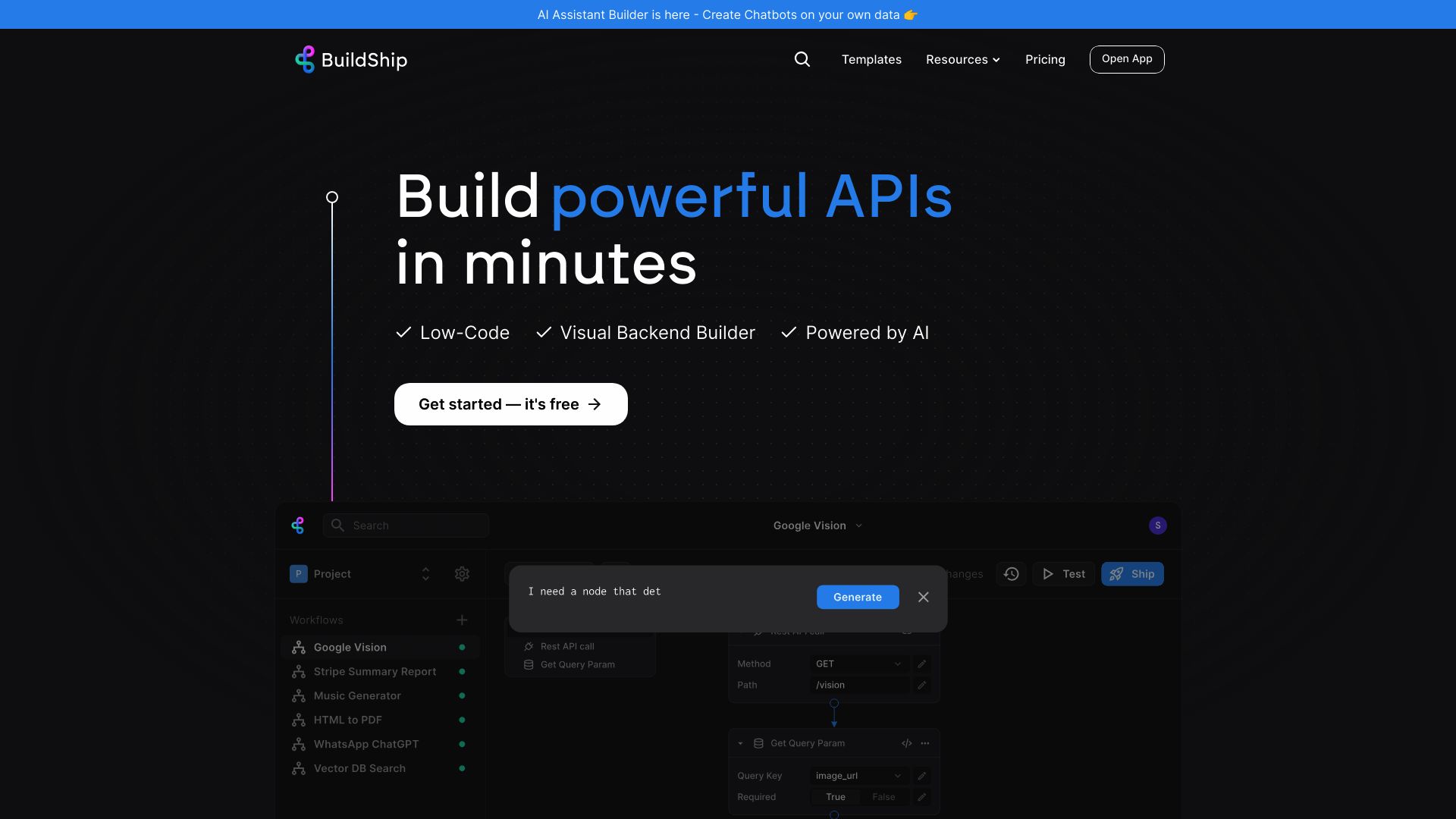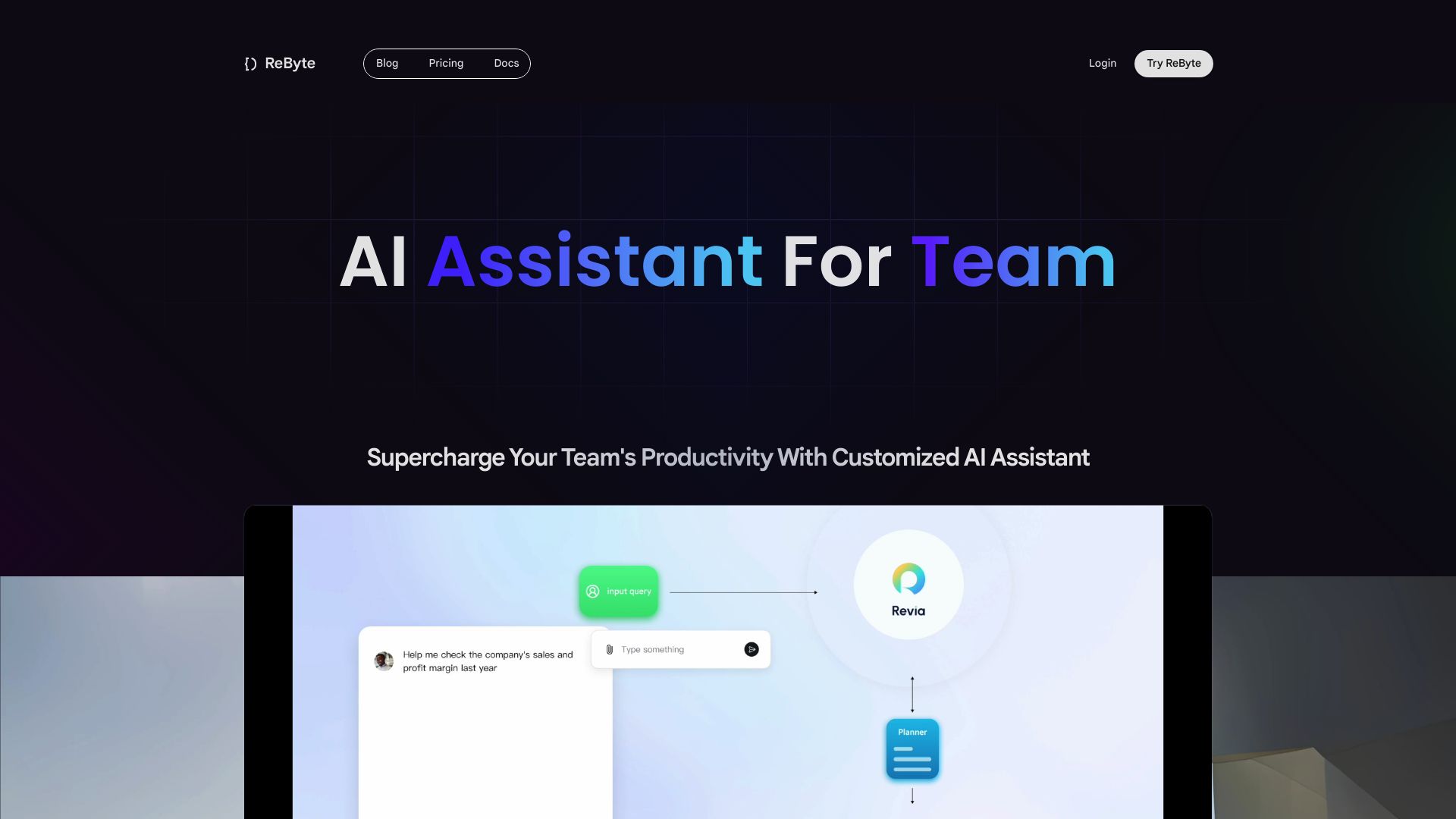BuildShip vs. Rebyte: Comparing AI Agent Development Platforms
AI agent builders revolutionize software development, empowering users to create sophisticated applications with minimal coding. This comparison explores BuildShip vs. Rebyte, two platforms at the forefront of this transformation. BuildShip’s visual workflow builder excels in backend automation, while Rebyte focuses on AI-powered application development with no-code UI creation.
We’ll examine their unique approaches to AI integration, ease of use, and deployment options. By understanding their strengths and limitations, readers will gain insights to choose the right platform for their AI development needs. However, as we delve into these solutions, we’ll also introduce SmythOS, a comprehensive platform that addresses limitations and offers unparalleled flexibility in AI agent development.
BuildShip Overview
BuildShip empowers developers to create scalable backend workflows and APIs without extensive coding. The platform’s visual builder simplifies complex backend development, allowing users to construct workflows by connecting pre-built nodes or generating custom ones using AI.
BuildShip’s strength lies in its ability to integrate various data sources, APIs, and AI models into cohesive workflows. Users can leverage AI-powered autofill for inputs, streamlining the development process. The platform supports both no-code and low-code approaches, enabling users to write custom logic in JavaScript or TypeScript when needed.
BuildShip empowers developers to create scalable backend workflows and APIs without extensive coding. The platform’s visual builder simplifies complex backend development…


The platform offers robust testing capabilities for individual nodes and entire workflows, ensuring reliability before deployment. Users can deploy their creations as production-grade APIs, integrate them into applications, or schedule them to run automatically. BuildShip’s use of Google Cloud Platform ensures scalability and security, with features like OAuth integration and secure storage for API keys.
While BuildShip excels in backend automation and workflow creation, it may have limitations in areas such as advanced AI agent collaboration or specialized features like autonomous decision-making. The platform’s focus on backend development means it may not be as comprehensive for users seeking end-to-end AI agent solutions with advanced natural language processing or computer vision capabilities.
BuildShip’s target audience includes developers seeking efficient backend solutions, businesses aiming to automate processes, and teams looking to integrate AI into their workflows. The platform’s blend of visual development and code customization options makes it versatile for various skill levels and project requirements.
Rebyte Overview
Rebyte empowers users to rapidly develop AI-powered applications without extensive coding skills. The platform’s visual agent builder enables the creation of customizable AI agents with multi-step workflows using large language models. This approach allows for the construction of complex backend logic through an intuitive interface.


Rebyte’s key strengths lie in its no-code UI creation capabilities, integrations with private data sources, and detailed observability into every step of an agent’s process. The platform offers a serverless runtime designed for production deployment and scaling of agents, making it suitable for both development and enterprise-level applications.
Rebyte’s key strengths lie in its no-code UI creation capabilities, integrations with private data sources, and detailed observability into every step of an agent’s process.
The open-source nature of Rebyte fosters a collaborative environment, allowing developers to contribute and customize the platform to their specific needs. However, this openness may require users to have a deeper understanding of the underlying technologies to fully leverage its capabilities.
Rebyte’s vision of democratizing AI development aligns with the growing demand for accessible AI tools. By enabling knowledge workers and teams to automate workflows and boost productivity through no-code interfaces, Rebyte positions itself as a catalyst for the GenAI era. Users can potentially transform ideas into deployed applications by simply describing their requirements, streamlining the development process significantly.
Rebyte’s vision of democratizing AI development aligns with the growing demand for accessible AI tools. By enabling knowledge workers and teams to automate workflows and boost productivity through no-code interfaces…
While Rebyte offers a comprehensive suite of tools for AI agent development, it may face challenges in areas such as scalability for large enterprises and integration with legacy systems. As the AI landscape evolves, Rebyte will need to continually update its features and capabilities to remain competitive in the rapidly advancing field of AI agent builders.
Feature Comparison
BuildShip and Rebyte offer distinct approaches to AI agent development, each with its own strengths and limitations. BuildShip excels in backend workflow creation and API development, providing a visual builder that simplifies complex backend logic. Its integration with various AI models and APIs allows for versatile workflow creation. However, BuildShip lacks specific features for maintaining memory and context across sessions, which could limit its effectiveness in certain AI applications.
Rebyte, on the other hand, focuses more on AI-powered application development with a strong emphasis on no-code UI creation and integration with private data sources. It offers detailed observability into agent processes, a feature not explicitly mentioned in BuildShip’s capabilities. Rebyte’s open-source nature allows for greater customization but may require more technical expertise to fully leverage its potential.
In terms of core components, BuildShip provides robust testing capabilities for individual nodes and entire workflows, a feature not prominently mentioned in Rebyte’s offering. However, Rebyte’s emphasis on detailed observability could potentially offer similar benefits. Regarding security, BuildShip uses Google Cloud Secret Manager for API key security, while Rebyte’s security features are not explicitly detailed in the available information, potentially indicating a gap in this area compared to BuildShip.
Feature Comparison Table
| BuildShip | Rebyte | SmythOS | |
|---|---|---|---|
| CORE FEATURES | |||
| Memory & Context | ❌ | ✅ | ✅ |
| Autonomous Agents | ❌ | ❌ | ✅ |
| Explainability & Transparency | ❌ | ✅ | ✅ |
| Multimodal | ❌ | ❌ | ✅ |
| Problem-Solving Capabilities | ❌ | ✅ | ✅ |
| Multi-Agent Collaboration | ❌ | ❌ | ✅ |
| Human-AI Interaction | ❌ | ✅ | ✅ |
| Audit Logs for Analytics | ❌ | ✅ | ✅ |
| Work as Team | ❌ | ✅ | ✅ |
| SECURITY | |||
| Constrained Alignment | ❌ | ❌ | ✅ |
| Data Encryption | ✅ | ❌ | ✅ |
| OAuth | ✅ | ❌ | ✅ |
| IP Control | ✅ | ❌ | ✅ |
| COMPONENTS | |||
| Foundation AIs | ❌ | ✅ | ✅ |
| Huggingface AIs | ❌ | ❌ | ✅ |
| Zapier APIs | ❌ | ✅ | ✅ |
| Classifiers | ❌ | ❌ | ✅ |
| Logic | ✅ | ❌ | ✅ |
| Data Lakes | ❌ | ❌ | ✅ |
| DEPLOYMENT OPTIONS (EMBODIMENTS) | |||
| Deploy as Webhook | ✅ | ❌ | ✅ |
| Staging Domains | ❌ | ❌ | ✅ |
| Production Domains | ❌ | ❌ | ✅ |
| API Authentication (OAuth + Key) | ✅ | ❌ | ✅ |
| Deploy as Site Chat | ❌ | ✅ | ✅ |
| Deploy as Scheduled Agent | ✅ | ❌ | ✅ |
| Deploy as GPT | ❌ | ✅ | ✅ |
| DATA LAKE SUPPORT | |||
| Hosted Vector Database | ❌ | ✅ | ✅ |
| Sitemap Crawler | ❌ | ❌ | ✅ |
| YouTube Transcript Crawler | ❌ | ❌ | ✅ |
| URL Crawler | ❌ | ❌ | ✅ |
| PDF Support | ❌ | ✅ | ✅ |
| Word File Support | ❌ | ✅ | ✅ |
| TXT File Support | ❌ | ✅ | ✅ |
Best Alternative to BuildShip and Rebyte
BuildShip and Rebyte offer useful tools for AI development, but SmythOS stands out as the superior alternative. We provide a comprehensive platform that combines powerful features with unmatched ease of use. Our drag-and-drop interface enables rapid agent creation without coding, while still offering deep customization for advanced users. Unlike limited workflow builders, SmythOS supports true autonomous agents that can maintain context, collaborate, and tackle complex problems. We integrate seamlessly with leading AI models and offer flexible deployment options — as APIs, chatbots, scheduled jobs and more.
Our drag-and-drop interface enables rapid agent creation without coding, while still offering deep customization for advanced users.
With SmythOS, you’re not constrained to basic automations. Our platform enables sophisticated multi-agent systems that can transform your business processes. Security and scalability come standard, with features like data encryption and staged environments. Whether you’re automating customer service, analyzing data, or building AI-powered applications, SmythOS provides the comprehensive toolkit to bring your vision to life faster and more effectively than any alternative.
Conclusion
BuildShip and Rebyte each offer unique approaches to AI agent development, catering to different needs within the software development ecosystem. BuildShip excels in backend workflow creation and API development, providing a visual builder that simplifies complex backend logic. Its robust testing capabilities and integration with various AI models make it a solid choice for developers seeking efficient backend solutions. Rebyte, with its focus on AI-powered application development and no-code UI creation, appeals to users looking to rapidly prototype and deploy AI agents with minimal coding.
However, SmythOS emerges as the superior option, offering a comprehensive suite of features that address the limitations of both BuildShip and Rebyte. Our platform provides unparalleled flexibility with its ’Create Once, Deploy Anywhere’ approach, allowing users to build agents that seamlessly integrate across multiple environments. SmythOS’s extensive integration ecosystem, supporting over 300,000 integrations, far surpasses the capabilities of its competitors, enabling users to create complex workflows that connect to a vast array of data sources, APIs, and AI models.
SmythOS stands out with its advanced features such as multi-agent collaboration, autonomous agents, and robust memory and context management. These capabilities, combined with our platform’s emphasis on explainability, transparency, and security, make SmythOS the ideal choice for businesses seeking to harness the full potential of AI. We invite you to explore our diverse range of AI-powered agent templates and experience unlimited AI automation risk-free. Unlock the power of versatile AI deployment with SmythOS and transform your workflow today.
Last updated:
Disclaimer: The information presented in this article is for general informational purposes only and is provided as is. While we strive to keep the content up-to-date and accurate, we make no representations or warranties of any kind, express or implied, about the completeness, accuracy, reliability, suitability, or availability of the information contained in this article.
Any reliance you place on such information is strictly at your own risk. We reserve the right to make additions, deletions, or modifications to the contents of this article at any time without prior notice.
In no event will we be liable for any loss or damage including without limitation, indirect or consequential loss or damage, or any loss or damage whatsoever arising from loss of data, profits, or any other loss not specified herein arising out of, or in connection with, the use of this article.
Despite our best efforts, this article may contain oversights, errors, or omissions. If you notice any inaccuracies or have concerns about the content, please report them through our content feedback form. Your input helps us maintain the quality and reliability of our information.
